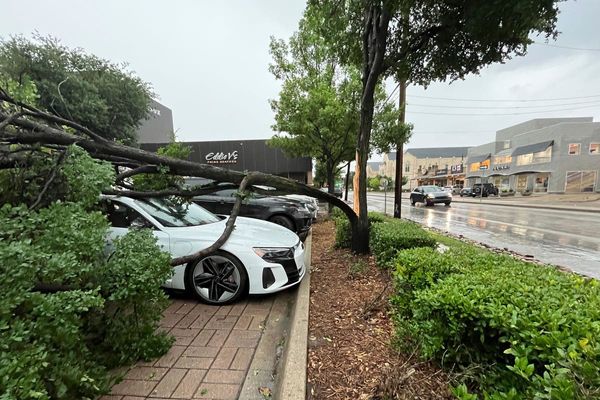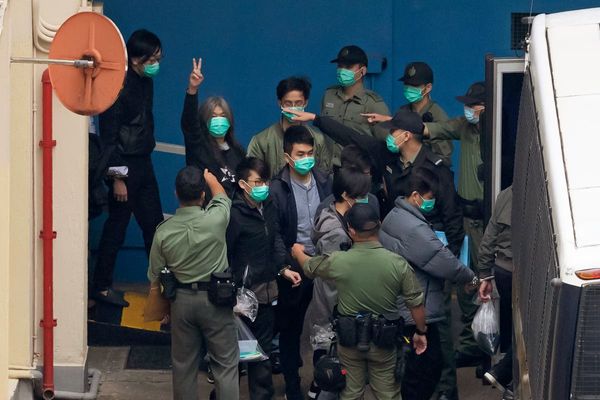
Andrii Seletskyi stands on what was, until Tuesday morning, the bank of the Dnipro River and looks out at the water, continously receding. The young mayor’s town is 60 miles (97km) north-east and upstream of the now ruined Nova Kakhovka dam, and he does not know where the riverwaters will finally settle.
It is a prospect that would prompt many to despair. But not Seletskyi, even though last week’s events will bring a dramatic change in the geography and hydrology of his town, Novovorontsovka. As a student of history, he has been thinking ahead and sees opportunity amid the chaos.
“In depth, the water has gone out over five metres; in width it is going out about 50 to 70 centimetres an hour,” the mayor says, standing on the old riverbank as the falling levels leave behind a bed of silty mud and a dominating musty, rotten smell. “It would be far worse if it was warmer,” he adds; the temperature has dropped about 10 degrees today and a rain storm sweeps in.
In his office Seletskyi explains further. “We don’t know where the water will stop,” he begins, but then he heads to the wall and the past to offer a prediction. “In 2020, we started a project of local history, and we bought from the United States aerial photographs taken by the Luftwaffe in 1943.” These showed the topography of the region before Nova Kakhovka was completed in 1956.
He started the project because he believed “there would be an emergency or explosion and the dam could be damaged”, but says no one took him very seriously. The regional governor in Kherson was completely dismissive until after the disaster, says Seletskyi. “He called up and said: ‘Can you show me those plans again?’”

Before the dam was completed, there were a series of smaller rivers lying in a floodplain, the nearest of which was the Bystryk. Its banks were 1km away from Novovorontsovka, Seletskyi says, pointing out the distance on the wartime photograph. The retreat of the Dnipro will require the town to find other water sources, he says, as he does not expect the dam to be rebuilt.
There is no immediate water crisis, fortunately, but to ensure a sustained long-term supply, engineers will have to complete pumping works on two remaining usable wells before an existing reservoir runs dry – assuming, that is, the town can get the money its needs to complete the work. Money has been promised by Kyiv but the project could take six months or more, Seletskyi says.
Complicating the picture further is the fact that the water infrastructure and Novovorontsovka remain in range of Russian guns across the river. Fear is as much of a problem as the danger of enemy shelling. “The day before yesterday, workers trying to repair water pipes evacuated a couple of times because they thought that river gulls flying towards them were Russian drones,” Seletskyi says.

Mines from the current war and even old explosives from the second world war remain a danger – specialist teams have been deployed five times so far to tackle contemporary and historic weaponry. The Dnipro was scene of a vast battle in late 1943, and military helmets and skulls, thought to be from that time, have ghoulishly appeared on the surface of the mud left be the receding waters.

Seletskyi hopes it may be possible to create a local museum of all the objects rapidly being uncovered. “We have a unique opportunity to dive into our history,” he says – and a duty to ensure that people do not steal or sell the artefacts that are revealed. He picks up a pair of mud-encrusted silver spoons “from the tsarist time” and a large key that looks like it could open a pirate’s chest.
The optimism under the circumstances is remarkable. “Of course we can rebuild,” says Seletskyi. “We have precedents in history. There are countries like Germany that were 90% destroyed after the war. They restored everything. I love my land and my home town, and I have this feeling of collective responsibility”







